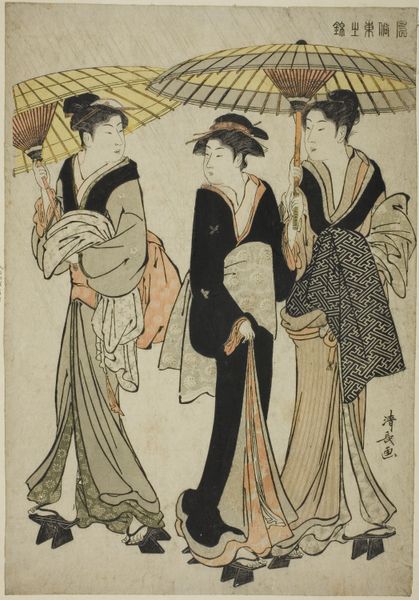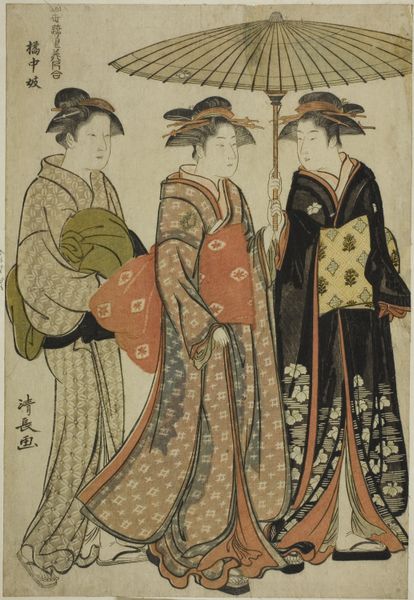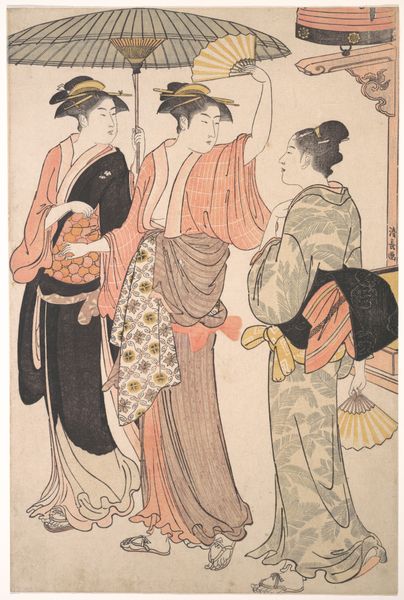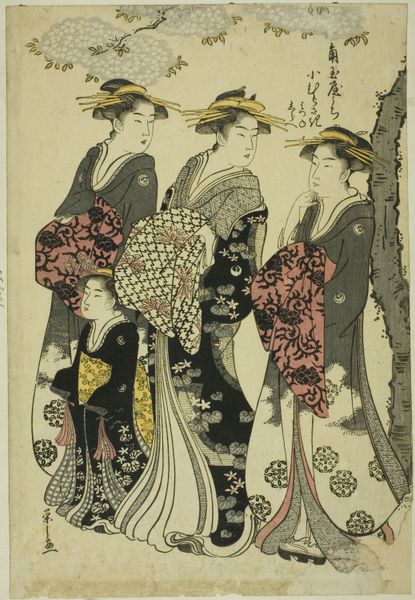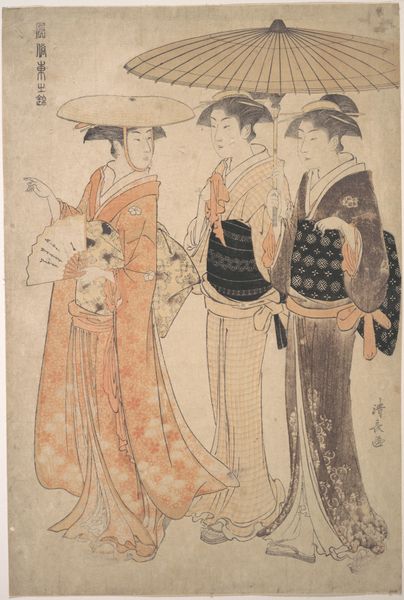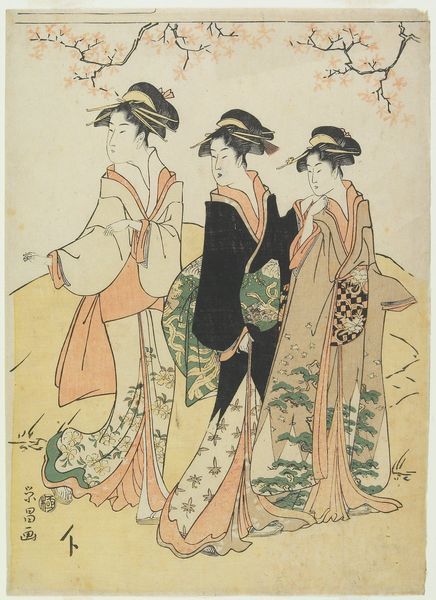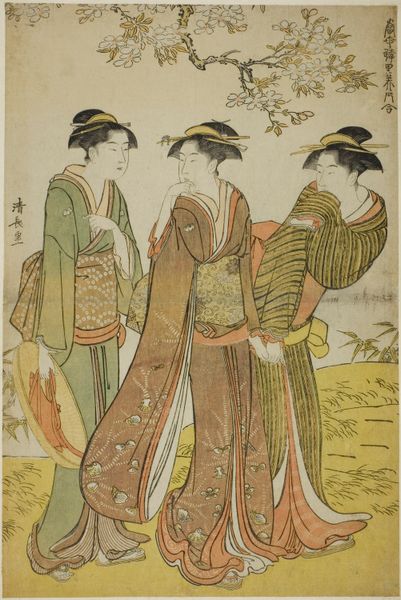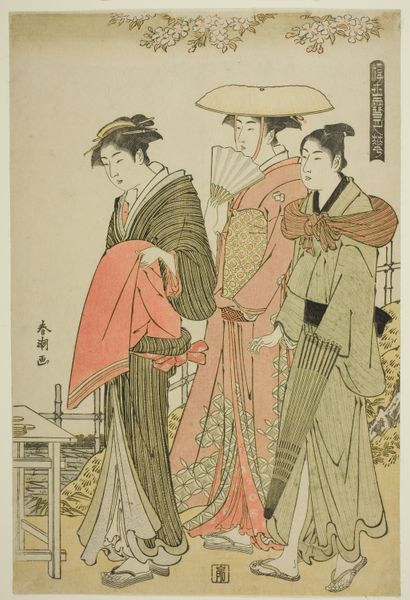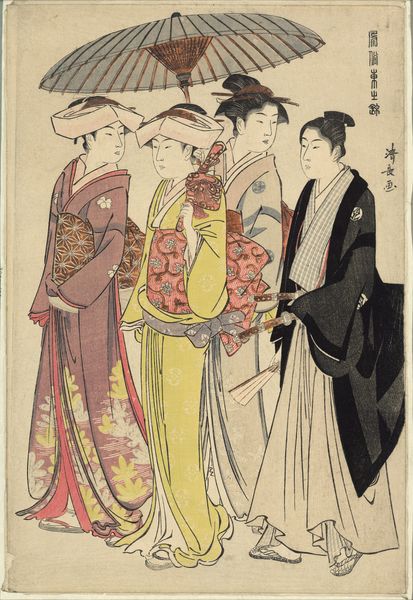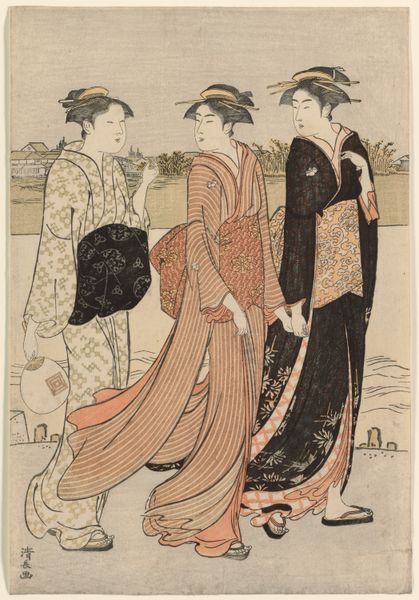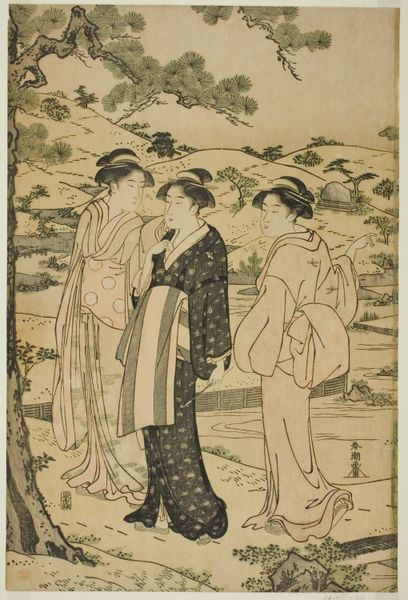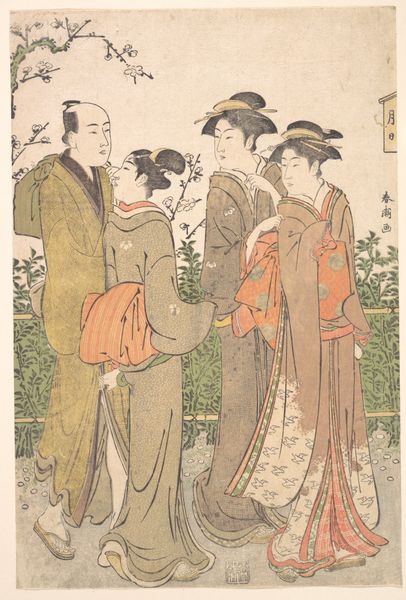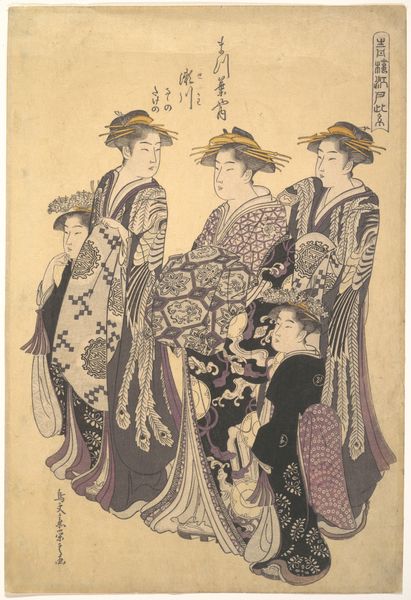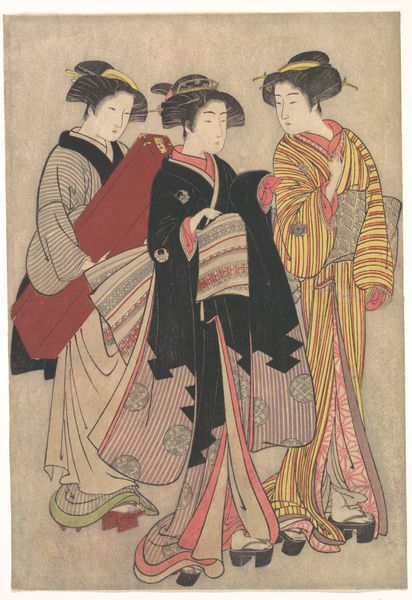
Four Seasons in the South - Summer View (Minami shiki natsu no kei) c. 1789 - 1793
0:00
0:00
#
portrait
# print
#
asian-art
#
ukiyo-e
#
historical fashion
#
genre-painting
Dimensions: 14 1/2 × 9 1/2 in.
Copyright: Public Domain
Curator: Standing here, one gets a real sense of the lazy haze of a summer afternoon, doesn't one? Editor: It does evoke a certain stillness. Looking at Utagawa Toyokuni I’s "Four Seasons in the South - Summer View," dating back to around 1789-1793, I can’t help but consider how deliberately crafted that sense of calm really is. Curator: Crafted, definitely. It's more than just capturing a nice view; there’s an art to it, right? I love how the artist balances these three figures with the landscape, making us feel like we’re eavesdropping on a private moment, perhaps some delicious gossip. Editor: More than eavesdropping, I think we’re invited to reflect on the position of women in Edo society. These women, likely courtesans, are framed by this elegant but somewhat confining space. It brings into focus the restrictions placed on their freedom, even as they command a certain visual power. Curator: Confining, yes, but also a stage. Think about those lanterns, that backdrop, those exquisitely detailed kimonos. This isn't just about limitations; it's about crafting an image, playing a role. Almost as if they are directing their own narratives, each expression poised between availability and detachment. Editor: I agree it's about role-playing. However, those roles were often dictated by the male gaze. The Ukiyo-e prints were circulated and consumed mostly by men, which frames these images within structures of power. Consider how their beauty standards were also part of that economy of desire. Curator: Always with the heavy stuff, aren't you? I guess it depends on how you read that gaze. Perhaps, within those constraints, they managed a form of subtle defiance? It is not so different, you know, from our own image making. Instagram comes to mind. We play the roles to some degree, too. Editor: And those roles reflect larger cultural trends. Let’s not romanticize those limitations though. They were living within strict hierarchical and patriarchal structures. I find this print to be a testament to women’s resilience in spite of a confining environment. The beauty, the attire – they can be tools, expressions of identity even if shaped by power dynamics. Curator: And so it is, a little beauty, a little melancholy, a summer moment perfectly captured. I shall think of those words next time when my photos get one too many likes... Editor: Indeed. Toyokuni’s work is not just an aesthetic pleasure; it's a reminder to delve deeper, to challenge our own preconceptions when we look back in time and reflect on present condition.
Comments
No comments
Be the first to comment and join the conversation on the ultimate creative platform.
